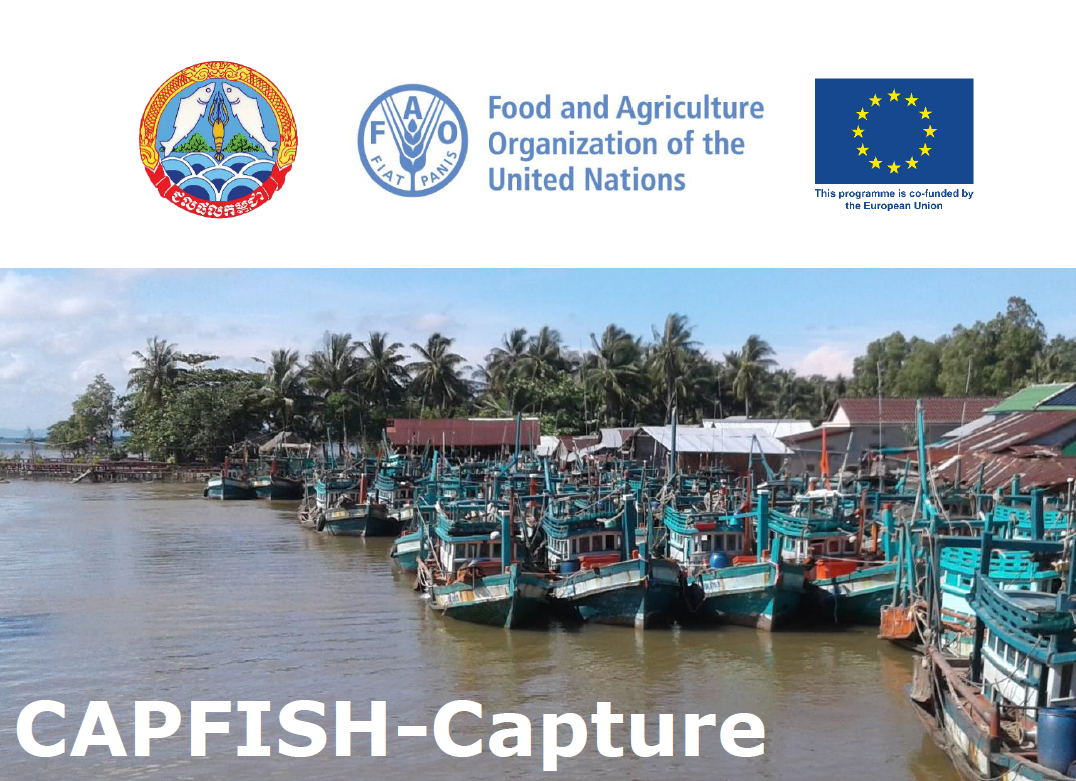
Fisheries Monitoring Database, Marine Fisheries Research and Development Institute (MaFReDI)
FiA publishes fisheries statistics, this data is collated from landing site by MaFReDI
Monthly Statistical Report for Scientific Catch Monitoring Survey at Marine Landing Sites in Cambodia June 2023
- Year: 2023
- Series: 06-មិថុនា June
- Publisher: MaFReDI
- Type: Catch Monitoring Survey
- Keyword or Hashtags: Marine, Catch , Monitoring , Survey
Monthly Statistical Report for Scientific Catch Monitoring Survey at Marine Landing Sites in Cambodia July 2023
- Year: 2023
- Series: 07-កក្កដា July
- Publisher: MaFReDI
- Type: Catch Monitoring Survey
- Keyword or Hashtags: Marine, Catch , Monitoring , Survey
Monthly Statistical Report for Scientific Catch Monitoring Survey at Marine Landing Sites in Cambodia August 2023
- Year: 2023
- Series: 08-សីហា August
- Publisher: MaFReDI
- Type: Catch Monitoring Survey
- Keyword or Hashtags: Marine, Catch , Monitoring , Survey
Monthly Statistical Report for Scientific Catch Monitoring Survey at Marine Landing Sites in Cambodia September 2023
- Year: 2023
- Series: 09-កញ្ញា September
- Publisher: MaFReDI
- Type: Catch Monitoring Survey
- Keyword or Hashtags: Marine, Catch , Monitoring , Survey
Monthly Statistical Report for Scientific Catch Monitoring Survey at Marine Landing Sites in Cambodia October 2023
- Year: 2023
- Series: 10-តុលា October
- Publisher: MaFReDI
- Type: Catch Monitoring Survey
- Keyword or Hashtags: Marine, Catch , Monitoring , Survey
Monthly Statistical Report for Scientific Catch Monitoring Survey at Marine Landing Sites in Cambodia November 2023
- Year: 2023
- Series: 11-វិច្ឆិកា November
- Publisher: MaFReDI
- Type: Catch Monitoring Survey
- Keyword or Hashtags: Marine, Catch , Monitoring , Survey
Monthly Statistical Report for Scientific Catch Monitoring Survey at Marine Landing Sites in Cambodia December 2023
- Year: 2023
- Series: 12-ធ្នូ December
- Publisher: MaFReDI
- Type: Catch Monitoring Survey
- Keyword or Hashtags: Marine, Catch , Monitoring , Survey
Annual Statistical Report for Scientific Catch Monitoring Survey at Marine Landing Sites in Cambodia 2023
- Year: 2023
- Series: ប្រចាំឆ្នាំ Annual
- Publisher: MaFReDI
- Type: Catch Monitoring Survey
- Keyword or Hashtags: Marine, Catch , Monitoring , Survey